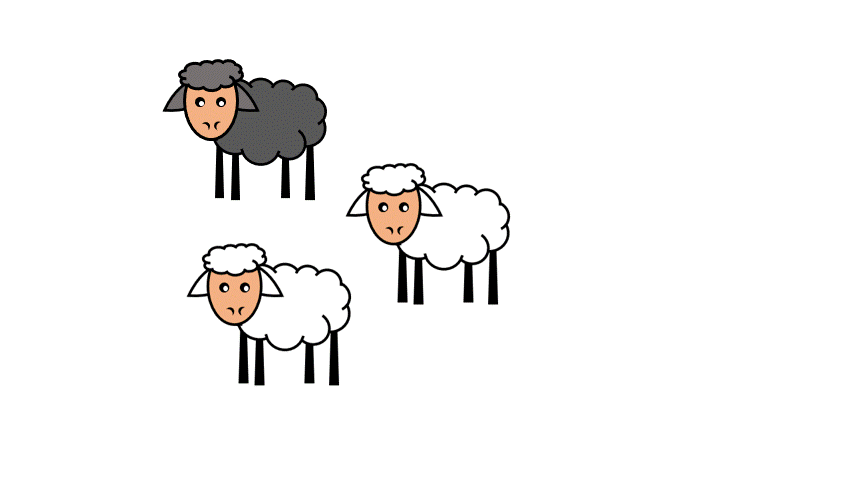Additive concepts
It's useful for parents to understand the concepts that learners need to get a full and deep understanding of. Although these ideas are straightforward they may not have been explained to parents when they were at school.
Below are two videos that introduce the "bar" model and the "part, part, whole" model both of which are commonly used with learners.
There are different types of addition and subtraction that often get lumped together so that learners never get to recognise the subtle differences between them. Taking time to understand beyond calculation procedures will help learners to gain a deeper understanding of fundamental numerical concepts that can in turn give them greater confidence.
To explore these ideas lets consider sheep!
Aggregation & partitioning
Consider this example, let's say there are five sheep in a field.
Some are white and some are grey.
This could be an activity mentors could do with learners and discuss how many of each there could be?

Lets reveal the fact there are in fact three grey sheep and two white sheep.
The FIVE can now be partitioned
into TWO and THREE.

This idea of partitioning is breaking
a value up into two smaller values.
Adding these values together again to find the sum or total is aggregation.
In this case of aggregation and partitioning, there was always FIVE sheep in the field but we considered them in two ways, as a whole group (of FIVE) or as two parts (a TWO and a THREE).
Adding to & taking away
Now lets consider THREE sheep in a field.
In this example the number of sheep changes.

If TWO more sheep join them then there are
now FIVE sheep in the field.

This case of a BEFORE and AFTER type of addition is called augmentation.
There were THREE and TWO were added so now there are FIVE
The opposite to augmentation (adding to) is TAKING away from.
So, lets consider starting with our five sheep in a field and take away one.

Again, we have a situation of a BEFORE and AFTER.
There are FIVE sheep to begin with and ONE is taken away to leave FOUR.
Some mathematicians would use the term subtract for just this operation of "taking-away", however some would argue that the term subtraction also includes the notion of "finding the difference".
Comparing and finding the difference
If we want to compare the number of white and grey sheep, we could line them up find the difference.
